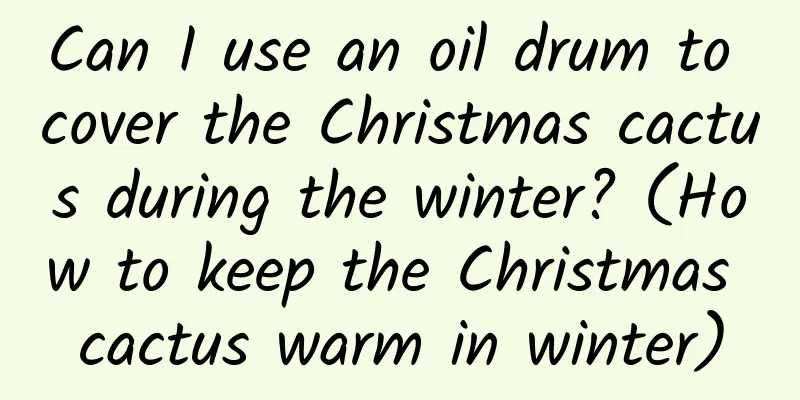Can I use an oil drum to cover the Christmas cactus during the winter? (How to keep the Christmas cactus warm in winter)

|
Covering potted plants with transparent containers in winter is mainly to create a small greenhouse environment: Cover the plants with a transparent container to keep them warm, mostly used for succulents. Especially for succulent varieties with high transparency of fleshy leaves such as Jade Dew, Jade Fan, Longevity, and Vientiane, the fleshy leaves can become fuller and more transparent under the premise of increasing the ambient temperature and preventing frostbite. However, succulents are short and small in size, making them easy to operate. Other potted plants that are not cold-resistant are generally more convenient to manage in homemade greenhouses. Moreover, if you don’t have a lot of flowers and plants at home, you only need to place the potted plants on a closed balcony or indoors for a short period of time in winter so they can naturally overwinter. There is no need to make too much trouble. In the south, where there is no indoor heating, you can add a fill light and temporarily gather all the flowers and plants together for maintenance. This will increase the light while slightly raising the ambient temperature, killing two birds with one stone. It is not recommended to cover Christmas cactus with oil drums to keep it warm in winterChristmas cactus is prone to powdery mildew in a warm and humid environment, and a well-ventilated and scattered sunlight environment is more conducive to water evaporation. When it is covered with a transparent container, the water evaporated by its own respiration will remain on the leaves for a long time. In addition, the indoor environment lacks sunlight and ventilation in winter. The long-term warm and humid environment will cause the Christmas cactus to reduce its resistance and make it more susceptible to disease. It is better to keep it in a relatively stable natural environment. As long as the ambient temperature is not lower than 5℃ and the soil in the pot is dry, it will not be frozen. Although Christmas cactus has an underdeveloped root system, as a member of the cactus family, it is not as delicate as everyone imagines! Problems with Christmas cactus in winter are mostly root rot caused by over-watering, long-term water accumulation in the pot, and flower bud falling caused by lack of sunlight and large temperature difference between morning and evening. Frostbite is not a fatal injury! |
Recommend
When should bananas be eaten and what should not be eaten with them
1. When to eat bananas Banana is a tropical fruit...
How to trim alum root to look good
When is the right time to prune alum roots? Pruni...
Tips for wintering Haworthia striata
Winter Lighting for Haworthia striata In fact, th...
Can Linalina be kept at home? What are its functions?
Is Linalin poisonous? Linaea is a succulent plant...
How to propagate tulips, the main propagation methods of tulips
1. Seed propagation 1. Bulb storage: Tulips are b...
How to prune lucky bamboo if it is too tall
1. Pruning method When lucky bamboo grows too tal...
Can forsythia be propagated by cuttings?
There are many methods of propagating Forsythia, ...
Where is the best place to plant August fried
August fried planting place August Explosion gene...
How to grow daffodil lilies
1. Maintenance methods 1. Light: Narcissus lily n...
How to change the soil of Dancing with the Wind? Can I divide the pot?
1. How to change the soil It prefers a relatively...
When do figs mature? How do figs be stored?
1. Maturity Time Figs generally ripen in summer a...
When to sow vinca roseus and how to make it bloom
1. Sowing time 1. Spring: It is best to sow vinca...
Cultivation methods and precautions of Jade Flower
1. Breeding methods 1. Watering: Water appropriat...
How to change the pot of the Bilei drum
1. Remove the succulents When repotting the cycad...
How to make avocado sprout quickly
Avocado germination environment First, buy plumpe...









